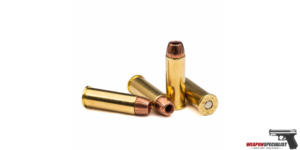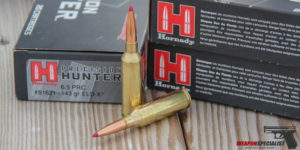The .303 British Ammo cartridge has a storied history, serving as the primary ammunition for the British Empire for over six decades. Its journey from the battlefields of the late 19th century to its modern-day applications is a testament to its enduring legacy and versatility. In this comprehensive analysis, we delve into the intricacies of the .303 British cartridge, exploring its origins, development, ballistics, historical significance, and contemporary relevance.
Origins and Development 303 British Ammo

The genesis of the .303 British can be traced back to the late 19th century, a period characterized by rapid advancements in firearms technology and military doctrine. In 1888, the British Army adopted the Lee-Metford rifle, which utilized the .303 British cartridge. This rimmed, bottlenecked cartridge was designed to accommodate the smokeless powder, a revolutionary innovation that replaced the traditional black powder, offering improved ballistic performance and reduced fouling.
The .303 British cartridge underwent several iterations and refinements in the ensuing years, most notably with the introduction of the Mark VII round in 1910. This iteration featured a 174-grain boat-tail bullet with a pointed spitzer design, further enhancing its ballistic coefficient and long-range accuracy. The Mark VII cartridge became synonymous with British military firepower during World War I, seeing widespread use in rifles such as the Lee-Enfield SMLE (Short Magazine Lee-Enfield).
Ballistics and Performance
The .303 British cartridge is renowned for its balanced performance, offering a combination of power, accuracy, and reliability. With a typical muzzle velocity ranging from 2,400 to 2,700 feet per second (fps), depending on the specific load and rifle configuration, it delivers formidable kinetic energy downrange. The round’s ballistic trajectory is relatively flat out to intermediate distances, making it well-suited for engagements up to 500 yards.
One of the key factors contributing to the .303 British’s effectiveness is its terminal ballistics. The round’s moderate sectional density and velocity result in controlled expansion and adequate penetration, making it lethal against a variety of targets, including personnel and light vehicles. Its stopping power and ability to incapacitate targets quickly earned it respect on the battlefield, cementing its status as a formidable combat cartridge.
Historical Significance 303 British Ammo

The .303 British cartridge played a pivotal role in shaping the course of modern history, seeing action in numerous conflicts spanning several continents. During World War I, British and Commonwealth forces relied heavily on the Lee-Enfield rifles chambered in .303 British to engage enemy combatants across the trenches of Europe, Africa, and the Middle East. The cartridge’s reliability and effectiveness contributed significantly to the Allied victory on multiple fronts.
The legacy of the .303 British endured well beyond World War I, with the cartridge continuing to serve as the standard-issue ammunition for British and Commonwealth forces throughout World War II and beyond. Its widespread adoption by various nations and militias further solidified its reputation as a versatile and battle-proven round. Even after the advent of more modern cartridges, the .303 British retained a loyal following among civilian shooters and military enthusiasts, who appreciated its historical significance and practical performance.
Contemporary Relevance
While the .303 British cartridge has largely been supplanted by more modern rounds in military service, it remains relevant in certain contexts, particularly in the realm of hunting and sport shooting. In countries where surplus Lee-Enfield rifles are abundant, such as Canada and Australia, the .303 British enjoys a dedicated community of enthusiasts who appreciate its classic design and nostalgic appeal.
Moreover, the .303 British cartridge continues to be manufactured by several ammunition companies, ensuring a steady supply for those who prefer its familiar ballistics and handling characteristics. While it may not be the first choice for military or law enforcement applications in the 21st century, its effectiveness as a hunting round for medium to large game, such as deer and elk, is undisputed.
Innovation and Adaptation 303 British Ammo
The development of the .303 British cartridge was not a static process; rather, it evolved over time in response to changing military requirements and technological advancements. One significant milestone in its evolution was the transition from black powder to smokeless powder, which revolutionized firearms design and performance in the late 19th century. The adoption of smokeless powder enabled the .303 British cartridge to achieve higher velocities, flatter trajectories, and reduced fouling, enhancing its effectiveness on the battlefield.
Another crucial aspect of the .303 British’s evolution was the continual refinement of its bullet design. The introduction of the Mark VII round in 1910 represented a significant leap forward, featuring a spitzer-shaped projectile with a boat-tail design. This aerodynamic configuration improved the round’s ballistic coefficient, resulting in greater accuracy and extended effective range. The Mark VII cartridge became the standard-issue ammunition for British and Commonwealth forces during World War I, solidifying the .303 British’s reputation as a potent combat round.

In addition to its standard ball ammunition, the .303 British cartridge was adapted for specialized roles, including armor-piercing, tracer, and incendiary rounds. These variants provided soldiers with versatile options for engaging different types of targets, from enemy personnel to fortified positions and vehicles. The development of these specialized rounds underscored the .303 British’s adaptability and effectiveness in diverse combat scenarios.
In conclusion, the .303 British cartridge stands as a testament to the ingenuity and craftsmanship of its designers and manufacturers. From its humble beginnings in the late 19th century to its enduring legacy in the 21st century, it has earned its place in the annals of firearms history as a quintessential military and sporting cartridge. Whether commemorating its historical significance or enjoying its practical performance in the field, the .303 British continues to captivate and inspire generations of shooters around the world.
Last Updated on May 16, 2024 by







